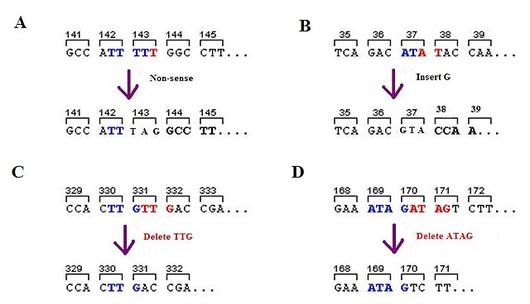A frameshift mutation is a mutation to a nucleic acid caused by an insertion or deletion in which the total number of inserted/deleted nucleotides is divisible by 3. If the interval of the nucleic acid belongs to a coding region, then the frameshift mutation alters the reading frame during translation downstream of the mutation site, so that the deletion of just 1 or 2 nucleotides can cause a huge change.
The figure below shows four different minor mutations to an interval of DNA that has been grouped into the codons of a reading frame. Of these four mutations, only the one shown in (C) does not serve as a frameshift mutation.

The understanding of frameshift mutations was integral in the landmark 1961 experiment of Francis Crick, Sydney Brenner, Leslie Barnett, and R.J. Watts-Tobin that established that protein translation operated on codons of nucleic acid. They observed that insertions/deletions of 1-, 2-, and 4-nucleotide intervals had major mutational effects, whereas those of 3-nucleotides were comparably minor. This pivotal observation began a series of experiments that would eventually decipher the genetic code.